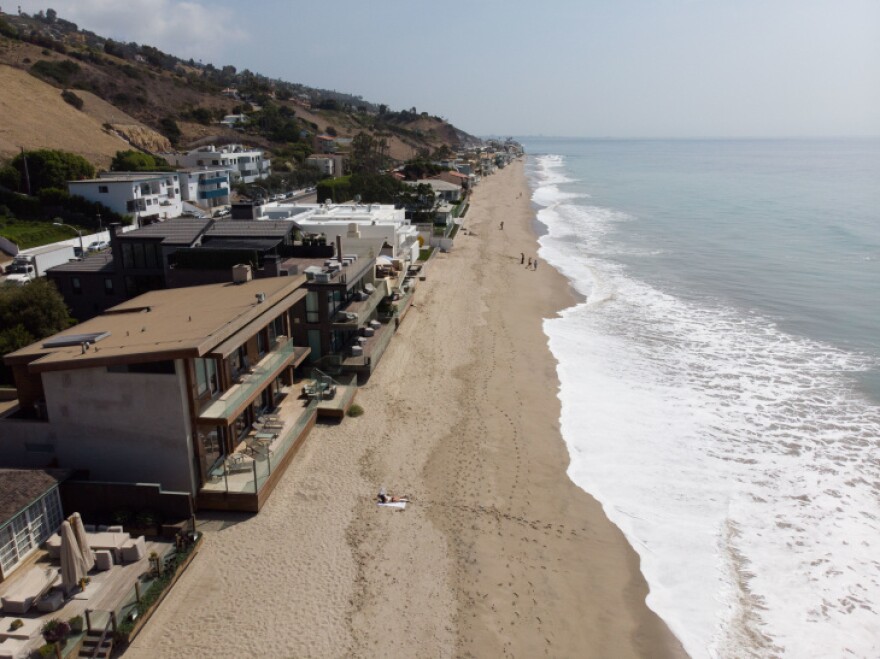This story is free to read because readers choose to support LAist. If you find value in independent local reporting, make a donation to power our newsroom today.
Utility Bill Credit Aimed At Fighting Climate Change Could Put Up To $100 Back In Customers' Pockets

Gas and electricity bills are too often a source of anxiety, but this month you should have some of that stress eased — many Angelenos will get a credit adding up to as much as $100 on their utility bills. It’s called the California Climate Credit and it’s a part of the state’s efforts to fight climate change.
This month, all residential SoCalGas customers, no matter their income, will receive a credit of $44.17 on their bill. Southern California Edison customers will also see a $59 credit this month as well as in October, according to the state’s utility regulator. The flat credit rates are set by the California Public Utilities Commission and don’t have anything to do with how much energy you use.
Don’t worry if you haven’t gotten your credit yet — not all of them have gone out, said Christine Detz, a spokesperson for SoCalGas. And if your bill adds up to less than $44 this month, then the credit will be applied to your next bill, she said.
The credit is one way the state uses money from its cap-and-trade program, which requires polluting industries like the power plants that burn fossil fuels to keep on our lights and heat (or air conditioners—who knows with the weather lately!) to pay for the pollution they emit.
Cap-and-trade works like this: Every year, the state auctions off a limited number of “emissions permits.” Those permits can’t exceed the “cap” set on the total amount of pollution that can be emitted to keep California on track towards its climate goals. As for the “trade” part: companies that provide our electricity and gas have to purchase or trade these permits to stay within their allowable emissions. As of 2020, each year, the cap is lowered by about 5%. The idea is to create a market that incentivizes companies to cut emissions.
The program has helped California achieve its goal of reducing emissions to 1990 levels four years early, but it’s been criticized for not lowering health-harming pollution in the communities beside industries like oil refineries and power plants.
Some of the revenue generated from cap-and-trade permit auctions goes to state programs that address climate change and some goes directly into our pockets through the “climate credit” we’ll see on our utility bills this month. Last year, those auctions generated more than $2.6 billion. The climate credit is a way to offset the costs that fall on the public as California transitions from energy generated by fossil fuels to cleaner energy like wind and solar.

The credit is just one piece of the state’s broad and complex strategy to address the climate crisis, said Colleen Callahan, co-executive director of the Luskin Center for Innovation at UCLA.
A study out of the policy research center found that in the earlier years of cap-and-trade, the credit program was successful in helping to protect low-income Californians from being overburdened by rising costs associated with the energy transition, but Callahan says it may be time to rethink a universal credit, especially as low- and middle-income Californians continue to be disproportionately impacted by the COVID-19 pandemic and rising gas prices fueled by Russia's invasion of Ukraine.
“Credits are an important way the state is trying to achieve its goal of transitioning to a clean energy, low-carbon economy without leaving anyone behind,” Callahan said. “But the state might want to look into whether the highest income should really be receiving the credit at all, or whether instead we should be diverting those funds to those who really need it.”
The current climate credit program will continue every year at least through 2030. But the credits are a “blunt instrument” in the state’s arsenal of tools to combat the climate crisis, said Callahan. Going forward, it might make sense to reallocate where those credits go in general, she said.
“If the goal is to increase energy affordability for low-income Californians during a transition to a clean, low carbon economy, then other strategies that the state are using should probably receive more emphasis in the future,” Callahan said.
Those strategies include investing more in programs geared towards low and middle-income households that improve energy efficiency in homes, lower or eliminate the cost of solar panels, and expand access to electric vehicles and electrified public transit, said Callahan.








